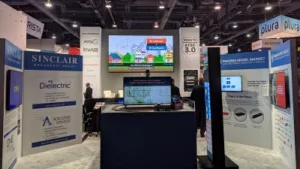From all appearances at the NAB 2019 Conference held in Las Vegas between April 6 and 11, there is considerable activity by broadcasters and manufacturers that are preparing to roll out over-the-air services, and professional and consumer products. The Spectrum repack Phase 2 is ending soon, and this means broadcasters are now transitioning to a rollout scenario for new services including ATSC 3.

The ATSC 3.0 standard has entered a mature status, with all elements published, and with significant support for mobile and interactive applications. Three main features that will appeal to “cord cutters” are 4K HDR picture with better sound, better over-the-air TV coverage, and interactivity.
CE manufacturers including LG, Samsung, and Sony – which actively participated in the development of the standard – are gearing up to introduce ATSC 3.0 products at the 2020 CES Show in January.
Actual deployments in Cleveland, Phoenix, Dallas, North Carolina and California are building experience today in the following areas:
- advanced advertising,
- audience measurement,
- triggering technologies,
- user interface design, and
- viewer experience.
ATSC Developments and Announcements at NAB 2019
There were more than 100 sessions and dozens of presentations and exhibits describing equipment, business scenarios, and rollout plans for ATSC 3.0. The sessions discussed Connected cars, Hybrid TV, Conformance Testing, Audio Enhancements made possible by the new standard. More than 50 exhibitors showcased new products that will allow broadcasters to implement services using the new standard.
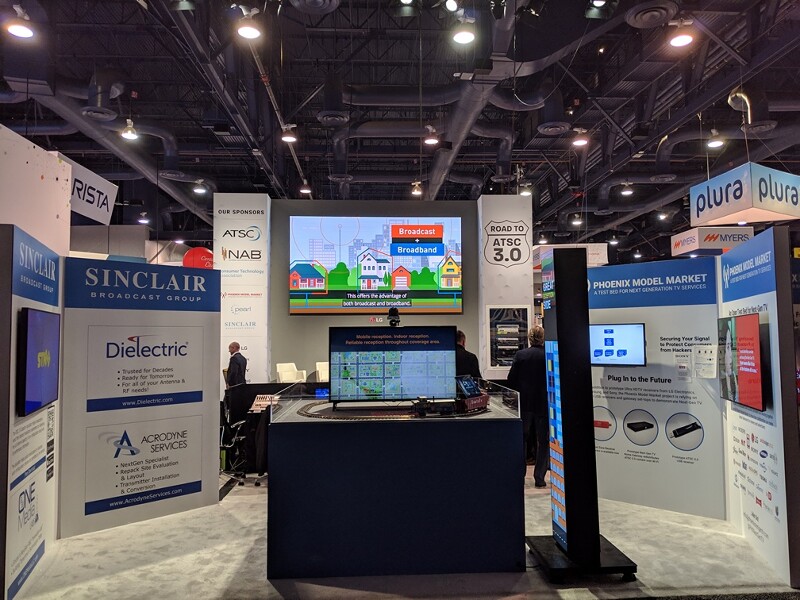 Figure 1: The ATSC exhibit at NAB highlighted current and planned deployments and products.
Figure 1: The ATSC exhibit at NAB highlighted current and planned deployments and products.
Sinclair / Pearl Announcement at NAB 2019
A broad coalition of broadcast television station groups – including network owned-and-operated stations and affiliates, as well as public broadcasters —announced plans to deploy Next-Gen TV in the 40 largest U.S. TV markets by the end of 2020.
The announcement includes Fox Television Stations, NBCUniversal Owned Television Stations, Univision, Cox Media Group, The E.W. Scripps Company, Graham Media Group, Gray Television, Hearst Television Inc., Meredith Local Media Group, Nexstar Media Group and TEGNA Inc.
See the Pearl press release for more details.
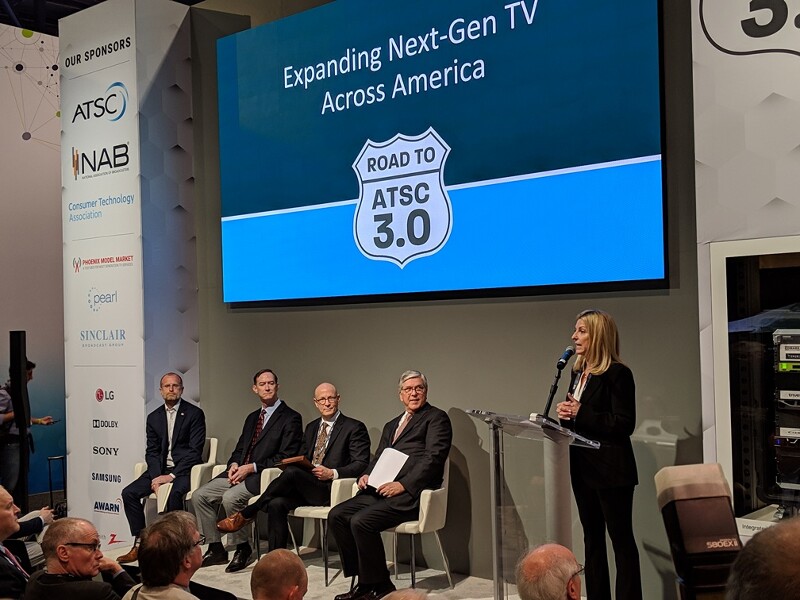 Figure 2. Pearl TV Managing Director Anne Schelle Discusses ATSC Rollout Plans
Figure 2. Pearl TV Managing Director Anne Schelle Discusses ATSC Rollout Plans
Deployments and Rollout Strategies
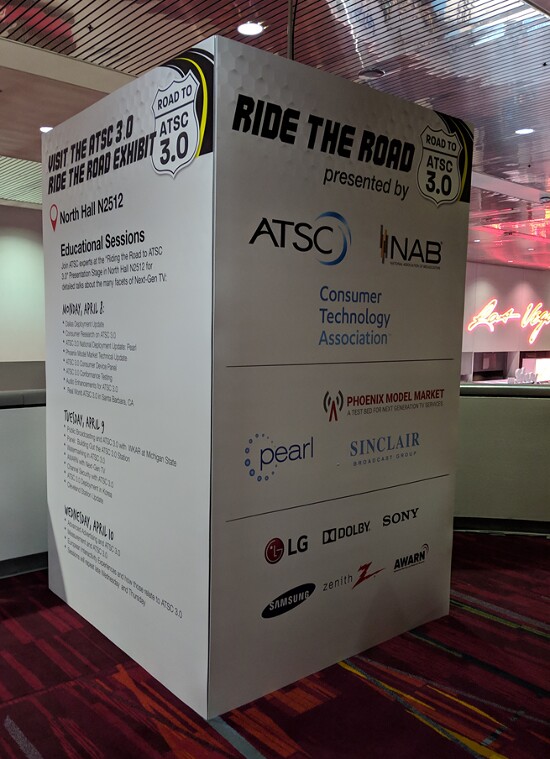 Incoming ATSC President Madeleine Noland described the expanding footprint of ATSC 3.0 transmissions, in a talk entitled “The Road to ATSC 3.0: An Update.” Current deployments include KBS, MBC, and SBS Broadcasting in South Korea; the NAB/CTA Experimental Station in Cleveland, OH; WRAL Capitol Broadcasting in Raleigh, NC; Sinclair Broadcast Group in Baltimore, MD and Dallas, TX; Pearl TV stations in Phoenix, AZ; WatchTV in Portland, OR; WKAR public broadcasting in East Lansing, MI; and Weigel Broadcasting in Chicago, IL.
Incoming ATSC President Madeleine Noland described the expanding footprint of ATSC 3.0 transmissions, in a talk entitled “The Road to ATSC 3.0: An Update.” Current deployments include KBS, MBC, and SBS Broadcasting in South Korea; the NAB/CTA Experimental Station in Cleveland, OH; WRAL Capitol Broadcasting in Raleigh, NC; Sinclair Broadcast Group in Baltimore, MD and Dallas, TX; Pearl TV stations in Phoenix, AZ; WatchTV in Portland, OR; WKAR public broadcasting in East Lansing, MI; and Weigel Broadcasting in Chicago, IL.
A panel of leading executives from station, manufacturing, technology, and broadcast businesses including LG, PBS, and the Pearl TV stations provided insights into their plans and perspectives on the future of television. With millions of ATSC 3.0 connected TVs expected to hit the market in the near future, broadcasters and OEMs are busy testing and developing the best consumer use cases to maximize revenue and viewer retention, while driving television sales.
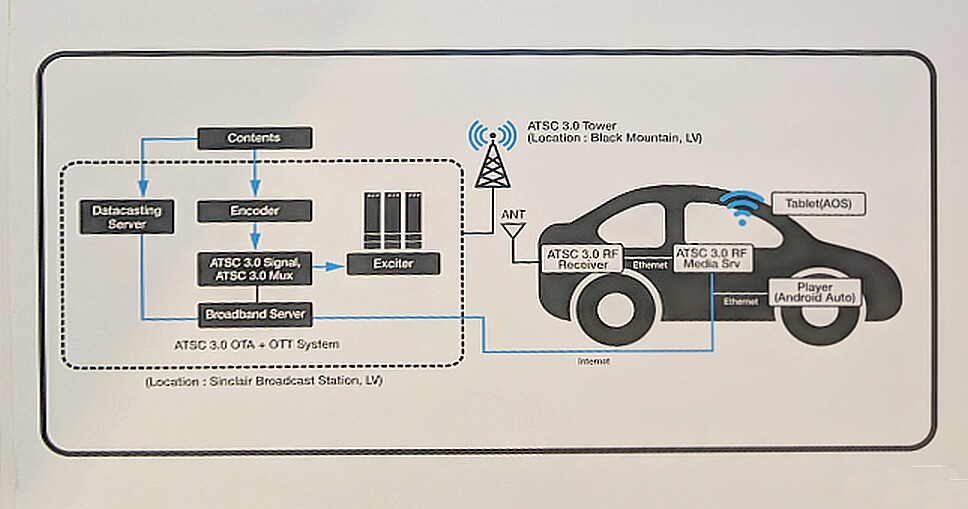 Figure 3: Targeted Advertising Use Case.
Figure 3: Targeted Advertising Use Case.
Harmonic’s Director of Broadcast Market Development, Jean Macher, presented a session on “Implementation and Test Results for ATSC 3.0 Hybrid Services at Chicago 3.0,” which examined a cloud-based approach to hybrid services that combine over-the-air broadcast with OTT streaming. These hybrid services are currently implemented in the “Chicago 3.0” ATSC 3.0 trial by Weigel Broadcasting Co., which was launched in September 2018 as an experimental next-generation full-power broadcast television station in one of the largest US TV markets.
Sinclair Broadcast, which represents 350 TV stations reaching more than 60% of U.S. households, is actively aggregating broadcast spectrum and building a national platform. Company VP of Technology Mark Aitken described three priority business models for their ATSC 3.0 transition:
- mobile TV,
- hybrid television, and
- automotive CDN.
All three demand a high level of automation, coordination, and sophistication, he pointed out.
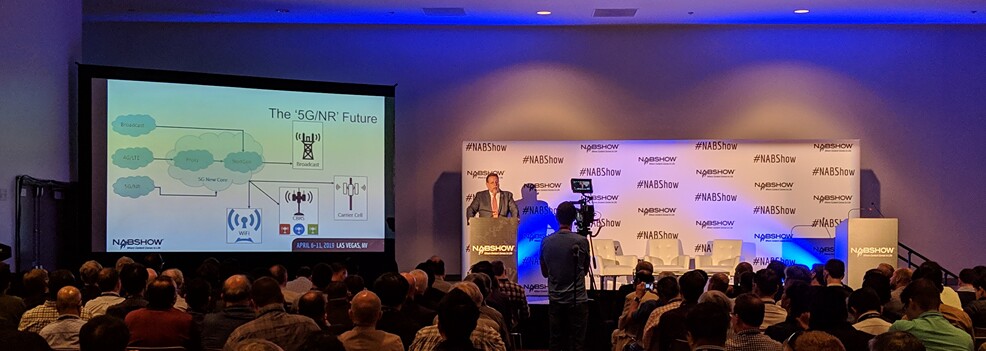 Figure 4: Sinclair’s Mark Aitken describes the station group’s plans for ATSC rollout.
Figure 4: Sinclair’s Mark Aitken describes the station group’s plans for ATSC rollout.
Sinclair envisions, and is bringing together, the broadcast entities and assets that will drive a multi-billion dollar spend to build a new business, SpectrumCo, which has the goal of competing in the wireless data transmission sector. In addition to aggregating and managing broadcast spectrum, two other primary alignments are being organized: NetworkCo, and InfrastructureCo, with the former concentrating on distribution of content and control, and the latter building the mechanics of broadcast installations.
Sinclair’s Jerald Fritz, EVP of Strategic and Legal Affairs, described how advanced features such as ad targeting to fixed and mobile devices, will be a key component of their service offerings to broadcasters. In a different session, Fritz explained “How Broadcasters May Utilize 5G Technology,” by showing that ATSC 3.0 can be used to offload 5G bandwidth during periods of high utilization. In this manner, he said, cell-phone carriers can get better efficiency compared to FeMBMS broadcast modes.
 Figure 5: ATSC 3.0 Enables Hybrid Broadcasting.
Figure 5: ATSC 3.0 Enables Hybrid Broadcasting.
Pearl TV consultant Peter Van Peenen presented “Practical Implementation and Launch Profiles for ATSC 3.0,” where he announced that the Phoenix ATSC stations have locked down their initial launch service configurations. The station group is building an SFN (single-frequency network) in Phoenix to learn optimal coverage configurations, and plans to activate a second “lighthouse” station there shortly.
Pre-production CE Receiver implementation and testing will be carried out later this year, with consumer marketing, branding, and messaging being developed with participating receiver manufacturers.
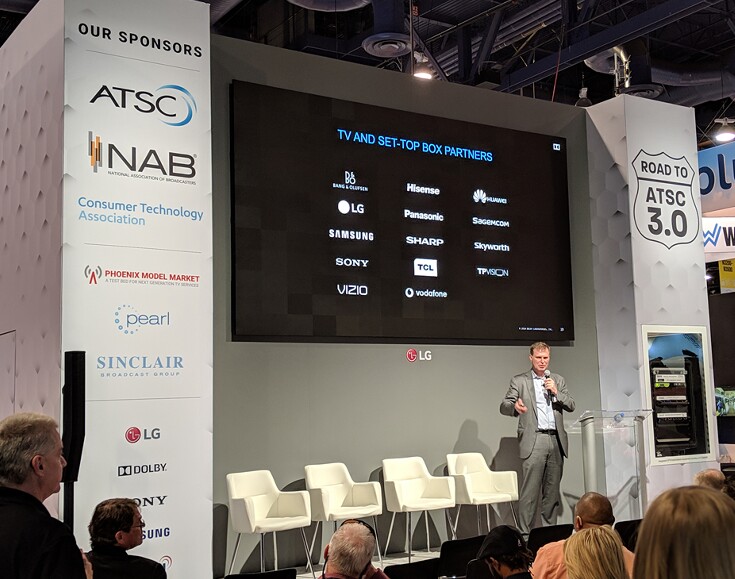 Figure 6: ATSC 3.0 TV and STB mfrs now include LG, Samsung, Sony, Vizio, Hisense, Panasonic, Sharp, TCL, Huawei, and TPVision.
Figure 6: ATSC 3.0 TV and STB mfrs now include LG, Samsung, Sony, Vizio, Hisense, Panasonic, Sharp, TCL, Huawei, and TPVision.
 Figure 7: ATSC chips and dongles will be available in 2020.
Figure 7: ATSC chips and dongles will be available in 2020.
Among the tasks remaining are developing a common application framework and starter user interface, signal protection and DRM (which is has been tested, but requires a complete infrastructure), and developing a beta audience data collection system. MVPD testing is also planned, to find features that work well in cable homes. (Aldo Cugnini)

